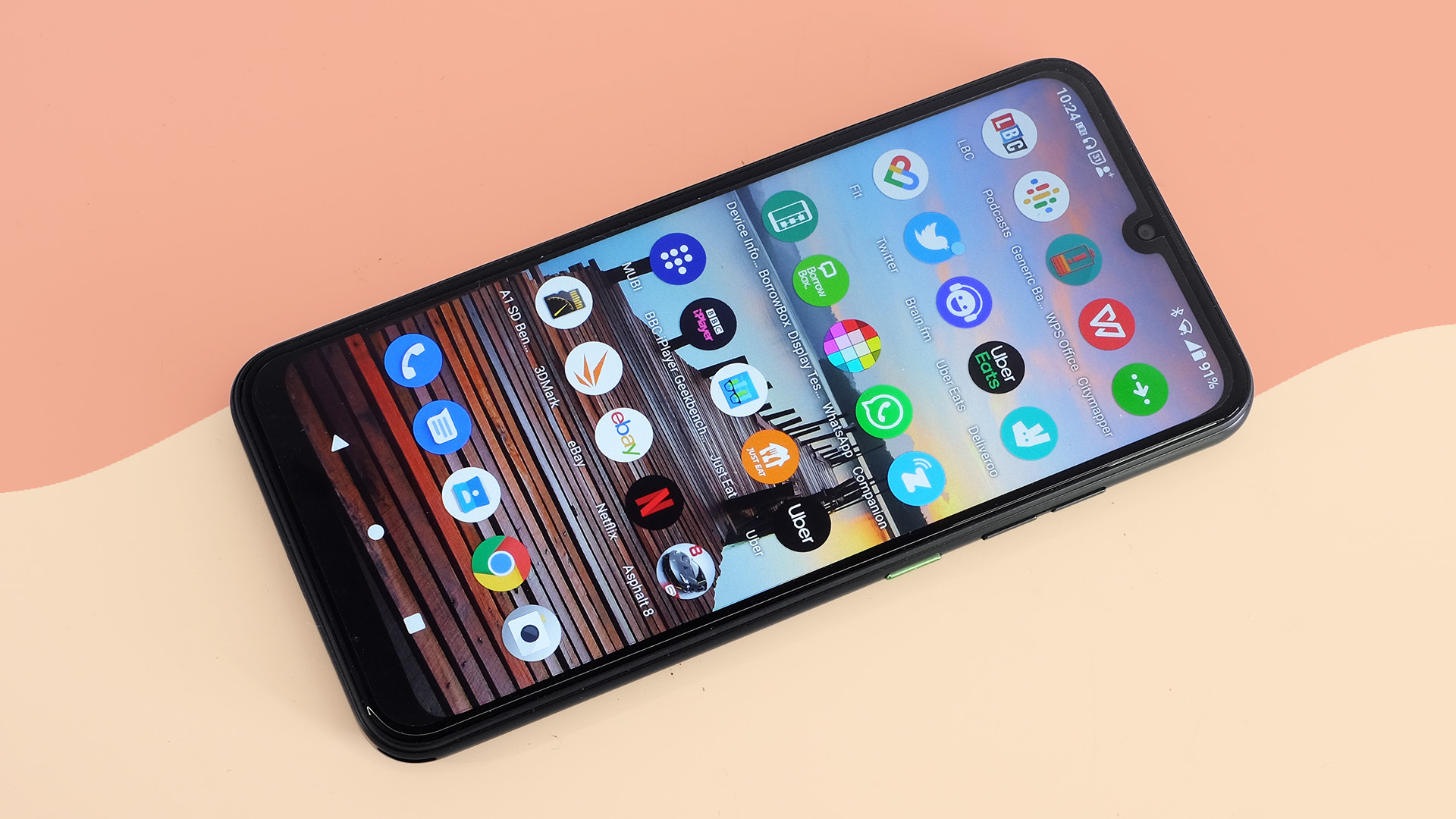TechRadar Verdict
The Teracube 2e is a high-concept phone with an admirably long warranty and some environmental cred, but it’s not a great buy if you want to do more than the very basics.
Pros
- +
Long battery life
- +
Four-year warranty
- +
Replaceable battery
Cons
- -
Terrible cameras
- -
Poor gaming performance, long load times
- -
Weak speaker
Why you can trust TechRadar
Two-minute review
A phone that looks as boring as the Teracube 2e has no right to be this interesting. The Teracube 2e is a $199 / £170 (around AU$250) phone sold on the idea that you can use it for four years or more, not just a couple.
It comes with a four-year warranty and has a replaceable battery just like phones from the old days (and the similarly positioned Fairphone range). You get an unusually tough case in the box too. And while the Teracube 2e's warranty doesn’t cover you for cracked screens, there is a reasonable $59 (roughly £40 / AU$75) cost for such repairs.
There’s a question mark over whether Teracube will actually exist in several years’ time to honor the warranty and provide the "3 years of Android and security updates" it promises. But that is always a risk when you buy tech from a start-up rather than an established tech giant.
But does the tech stack up? The Teracube 2e has a pleasant enough screen and the performance is acceptable. At its $99 pre-order price it was a good deal. Its $199 standard price is a harder sell.
Why? The Teracube 2e’s camera is very poor by the standards of similarly priced phones, and its MediaTek Helio A25 chipset is weak and does not hold up all that well today, let alone in four years’ time.
You can’t play Fortnite, and numerous games don’t run as well as they do on the various Moto G phones you can get for around the same money. We are not too worried about that, though. The Teracube 2e is not intended as a mobile for gamers. But given that it barely has the headroom to keep up with Android 10, how will Android 12 run?
Future performance is not something we usually worry about all that much, but it’s the Teracube 2e’s whole deal. The $49 (roughly £35 / AU$60) cost of a spare battery raises an eyebrow too.
The Teracube 2e ideal comes off better on Kickstarter than in reality. However, it does its job well if you keep your techy expectations low, and its real-world battery life is excellent.
Teracube 2e price and availability
- Out now in the US and UK
- Costs $199 (around £170)
The Teracube 2e is out now in the US and UK, available to order direct from the company's website. Oddly it's priced in US dollars (costing $199) even for UK orders (despite those shipping from the UK).
Given that exchange rates fluctuate, that presumably means the UK price will too, but with added VAT you should be looking at around £170. At the time of writing, the Teracube 2e isn't available in Australia.
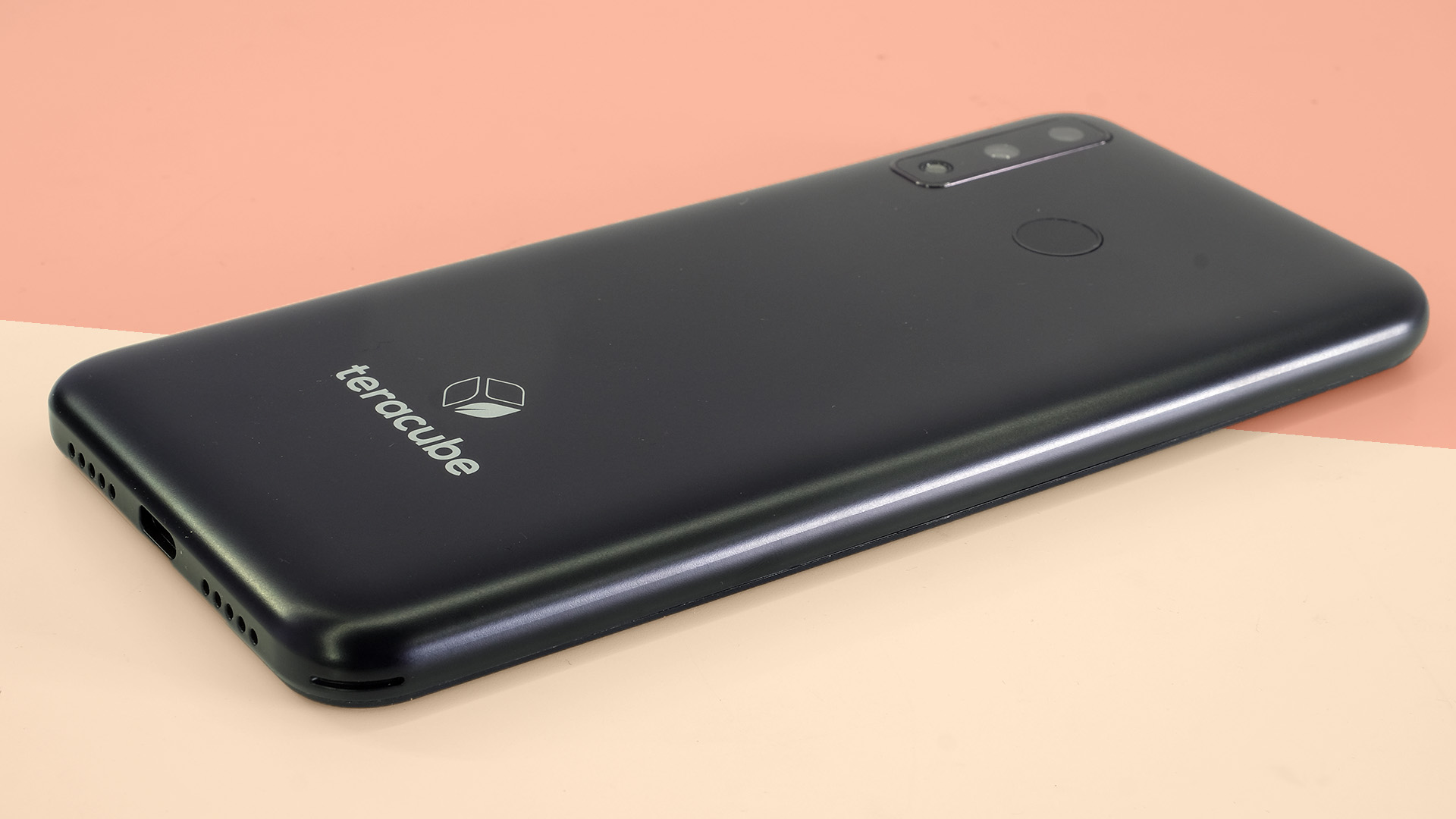
Design
- Plastic pull-off back
- Removable battery
- Tough case included
The Teracube 2e is notable for the ways it rejects a few conventions of phone design. You can pry off its exceptionally bland plastic back and get access to the battery. It pops out just like those from the early days of smartphones.
This is the substance behind the claim the Teracube 2e is a phone you can use for four years or more. As you probably know, rechargeable batteries have a limited lifespan.
"A normal battery is designed to retain up to 80% of its original capacity at 500 complete charge cycles when operating under normal conditions," says the Apple website about iPhone batteries. It’s perfectly normal for battery life to end up clearly worse after a couple of years, and this normal wear and tear is not covered by any standard warranty.
You can replace the ‘non user-replaceable’ batteries of many modern phones, but it involves surgery. You’ll usually have to use a heat gun to loosen the glue that keeps the back in place.
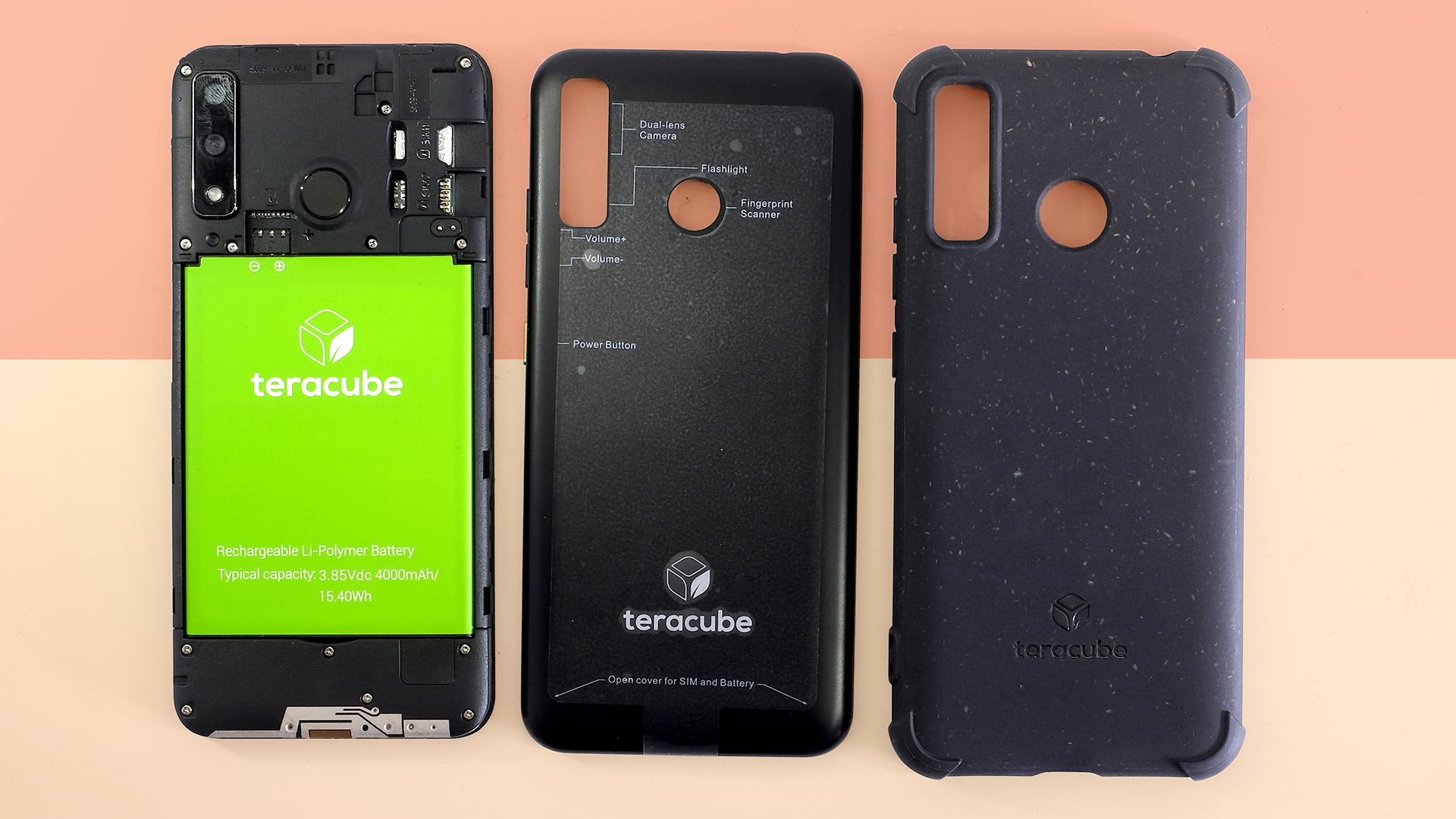
A Teracube 2e’s battery is easy to replace. The $49 cost of extra batteries may seem steep given you can find ‘new’ batteries for older Samsung phones for less than half that on eBay, but Teracube isn’t making these things on the scale of Samsung.
There’s a downside to the Teracube approach. A lack of rubberized seals around the rear case makes water ingress much more likely. And the battery contacts are right there to see, waiting to be shorted. Motorola uses a ‘nano coating’ on some of its budget phones to avoid this, without going down the more expensive route of water resistance that provides an IP rating-grade seal.
The Teracube 2e's battery is easy to replace, and easier to damage than most.
This is less likely to be a problem if you use the included case. A lot of phones come with a thin transparent silicone case, intended to avoid scratches while letting you see the finish underneath.
The Teracube 2e's case is much chunkier, more like an aftermarket case you might buy on Amazon for $15 / £10 or so. It’s built up at the corners, prepped for drops, and has a lip that sticks above the screen to avoid display damage.
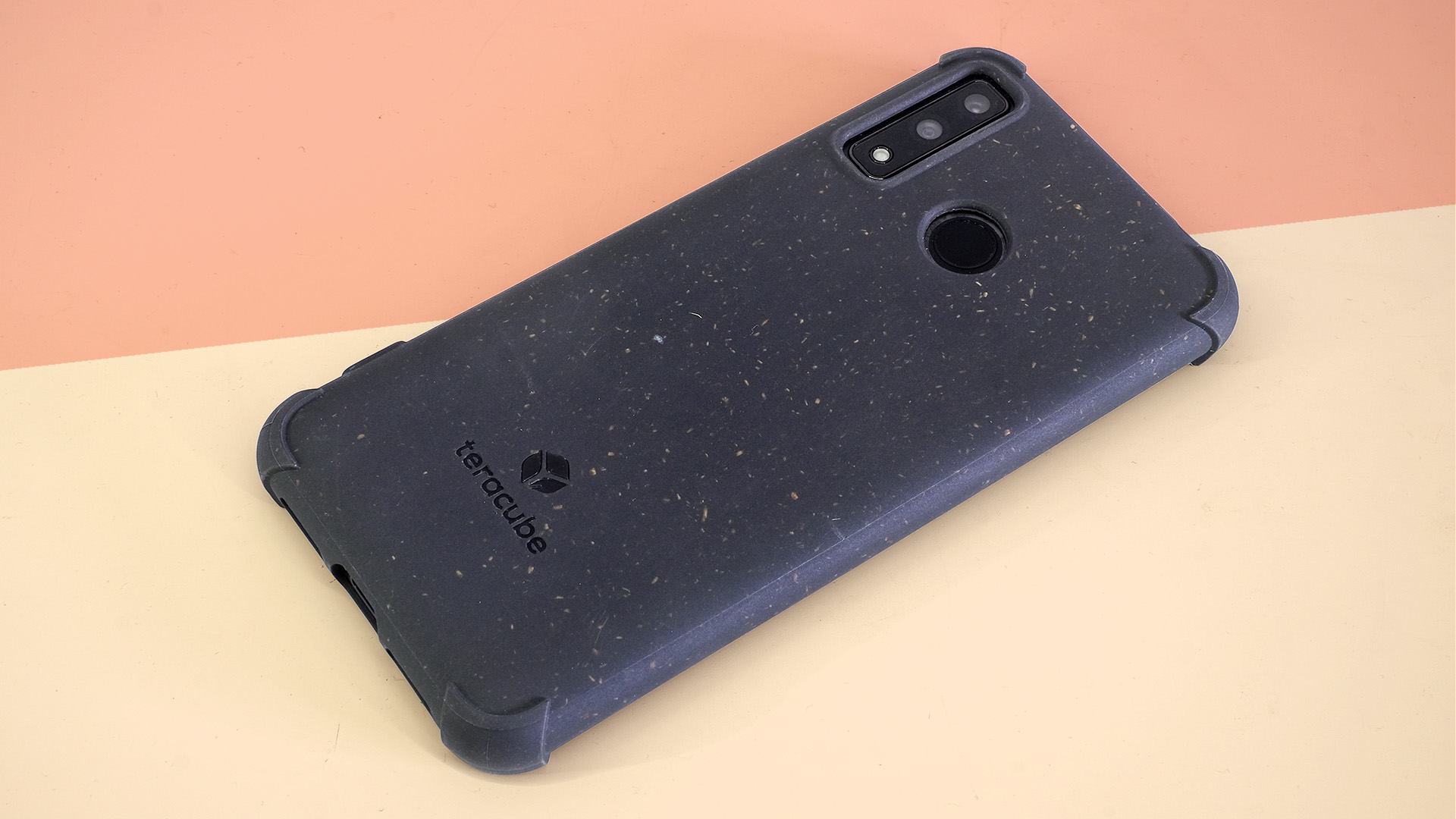
Despite the added protection it doesn’t bulk up the Teracube 2e so much you’ll want to leave it off. The speckled finish is also more interesting to look at than the satin-effect plastic of the rear cover. This case also has an environmental angle. It’s made of wheat starch and ‘biodegradable polymers’, so won’t take 500 years to break down like plastic.
And no, it doesn’t start disintegrating if you wash it under the tap. ‘Biodegradable’ is about the case eventually breaking down in landfill, not while you use the Teracube 2e.
Most other parts of the outer hardware are similar to what you’d expect from other affordable phones - though it's made from recycled materials. The Teracube 2e has a 3.5mm headphone jack and a moderately fast rear fingerprint scanner.
Its speaker, a single driver at the bottom, is poor, however. Thin-sounding and quiet, the Teracube 2e can’t compete with most of the $200 / £170 phones we’d recommend.
Display
- Bright ~600 nit IPS LCD
- Solid color
- 720p resolution with no additional frills
The Teracube 2e's screen measures 6.1 inches across and, like the displays of almost every smartphone, looks pretty good.
Color is reasonably well saturated for a cheaper phone, image sharpness is fine, and max brightness is surprisingly high. It hits 596 nits according to our colorimeter, about 150 more than you might expect from a solid budget display.
That said, we did find the camera preview image a little dimmer than we’d like when out taking photos, as the Teracube 2e doesn’t fiddle with color and contrast to improve visibility in bright conditions.
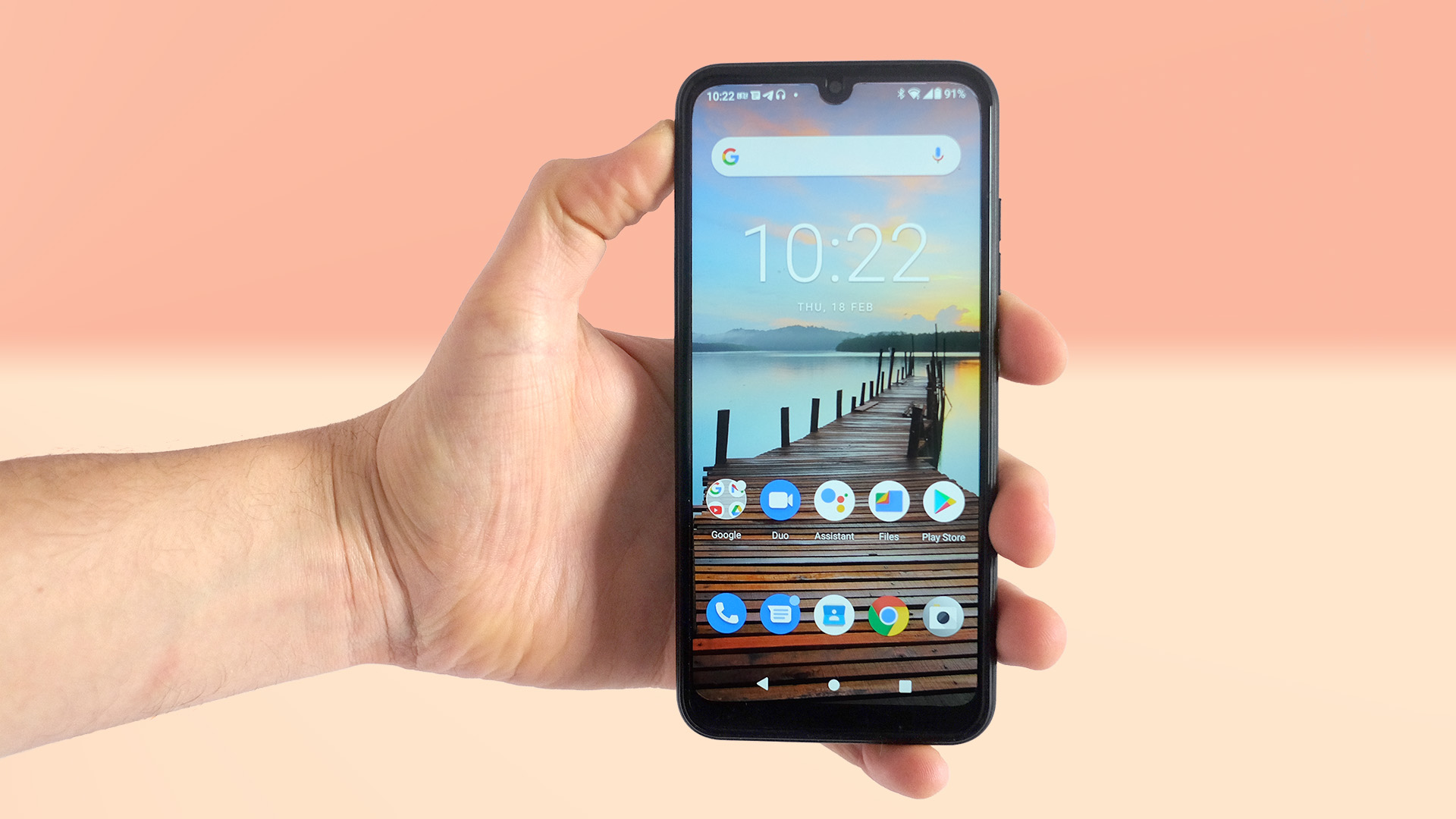
That’s the end of the Teracube 2e’s notable display abilities. It does not support HDR, its 720p resolution is not as sharp as that of the 1080p phones available at the same price, and the screen refresh rate is the standard 60Hz. So it doesn’t have the scrolling smoothness of a 90Hz or 120Hz display.
This is no surprise. It's not realistic to expect disruptive levels of tech from a brand more interested in (relative) sustainability. We’re satisfied by the Teracube 2e’s display.
Specs and performance
- Helio A25 chipset scrapes by with no deal-breaking basic lag
- Poor for gaming, with low frame rates and long load times
- A clean take on Android 10
The Teracube 2e's processor is more likely to be an issue for some of you. It’s the MediaTek Helio A25, which tends to be used in phones significantly cheaper than the Teracube 2e.
Sure, it has eight cores, but its performance is not close to, for example, the Snapdragon 662 used in the Moto G9 Power. It scores 738 points in Geekbench 5, to the ~1400 of the G8 Power.
There’s some good news. The Teracube 2e’s general performance is okay, most likely because it has 4GB of RAM. A few cheap phones with this kind of limited processor also have the absolute minimum amount of RAM, and it can make daily use a total chore.
Those phones make us long for the day the review is over, and we can get rid of a review device. But the Teracube 2e’s day-to-day experience is perfectly fine.
Sure, there are some slight pauses when you switch apps or load up the virtual keyboard. However, there’s nothing in the basics to give you a headache.
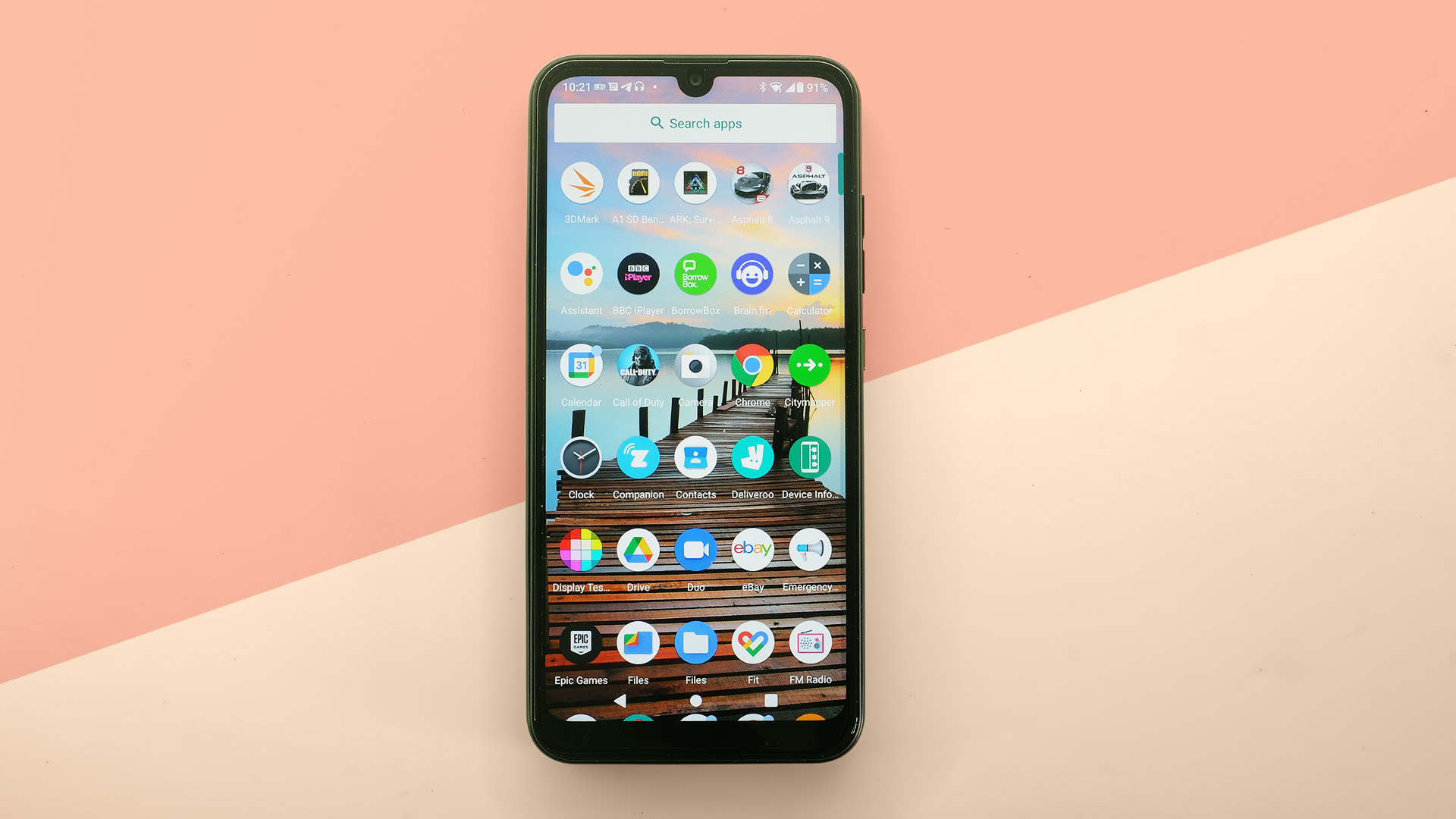
You feel the Teracube 2e’s limited power more keenly when you ask it to do something more demanding. Games like Asphalt 9 and ARK: Survival Evolved take so long to load you’d assume they’ve crashed. Sometimes that is the case but, generally, it’s just that load times are interminable.
This is a bad phone for gaming. Fortnite isn’t supported, presumably because the Teracube 2e doesn’t meet its minimum requirements. ARK: Survival Evolved is a write-off. Asphalt 9 runs okay-ish, but there are regular pauses when the action or environment gets too busy.
But that doesn’t mean you can’t play anything on the Teracube 2e. Asphalt 8 runs well, as does PUBG - but they still suffer from godawful load times. Asphalt 8 was released in 2013 too, and while it has no doubt changed since then, getting a game that old to run well is no achievement in a $200 / £170 mobile.
Don’t expect too much from the Teracube 2e. But at least the software looks nice.
Teracube says this is ‘stock’ Android 10, but there are some tweaks here and there. For example, there’s a spot for MediaTek’s DuraSpeed feature in the Settings menu. This strictly limits background processes, a way to hide the bad performance of MediaTek’s cheapest chipsets. But, thankfully, despite all its gaming issues the Teracube 2e doesn’t really need DuraSpeed.
Camera
- Terrible ultra-wide camera
- Very old-fashioned HDR implementation
- Unstabilized video
Teracube saved some money on the 2e’s chipset, and the same is true of the camera hardware and software R&D (or lack thereof). The Teracube 2e has two rear cameras. there’s a 13MP primary camera with an f/2.0 lens and an 8MP ultra-wide with an f/2.2 lens.
We have only one nice thing to say about the Teracube 2e's camera, which is that the main camera can take passable photos if you choose your framing carefully and take the time to use the HDR mode. Other than that, it does not compare well to almost any other similarly priced phone we might mention.
Our first issue is another example of cost-cutting. The Teracube 2e’s camera covering does not have an oleophobic coating. This means getting finger grease off can feel like scrubbing crude oil out of your carpet. One wipe won’t do, even with a glasses cloth. We imagine many Teracube 2e buyers will go around with a fine layer of finger grease covering the camera, quietly smearing a Vaseline glaze over their photos.

The Teracube 2e’s ultra-wide camera is terrible. It does not have autofocus, detail is poor even in good lighting, and the right third of photos look excessively soft, as if the lens is misaligned with the sensor.
Shooting images with the Teracube 2e also feels a bit like skipping back to 2013, because the standard auto mode does not appear to make any use of Auto HDR. Blown highlights and dim shadows are the orders of the day, and they are far from fresh.
There is an HDR mode, but this takes a long time to capture a single image and does not fix blown highlights. It just brings up the shadows a bit. This phone’s HDR mode is far less effective, and far slower, than the standard shooting modes of rival phones from Realme, Motorola and Samsung.
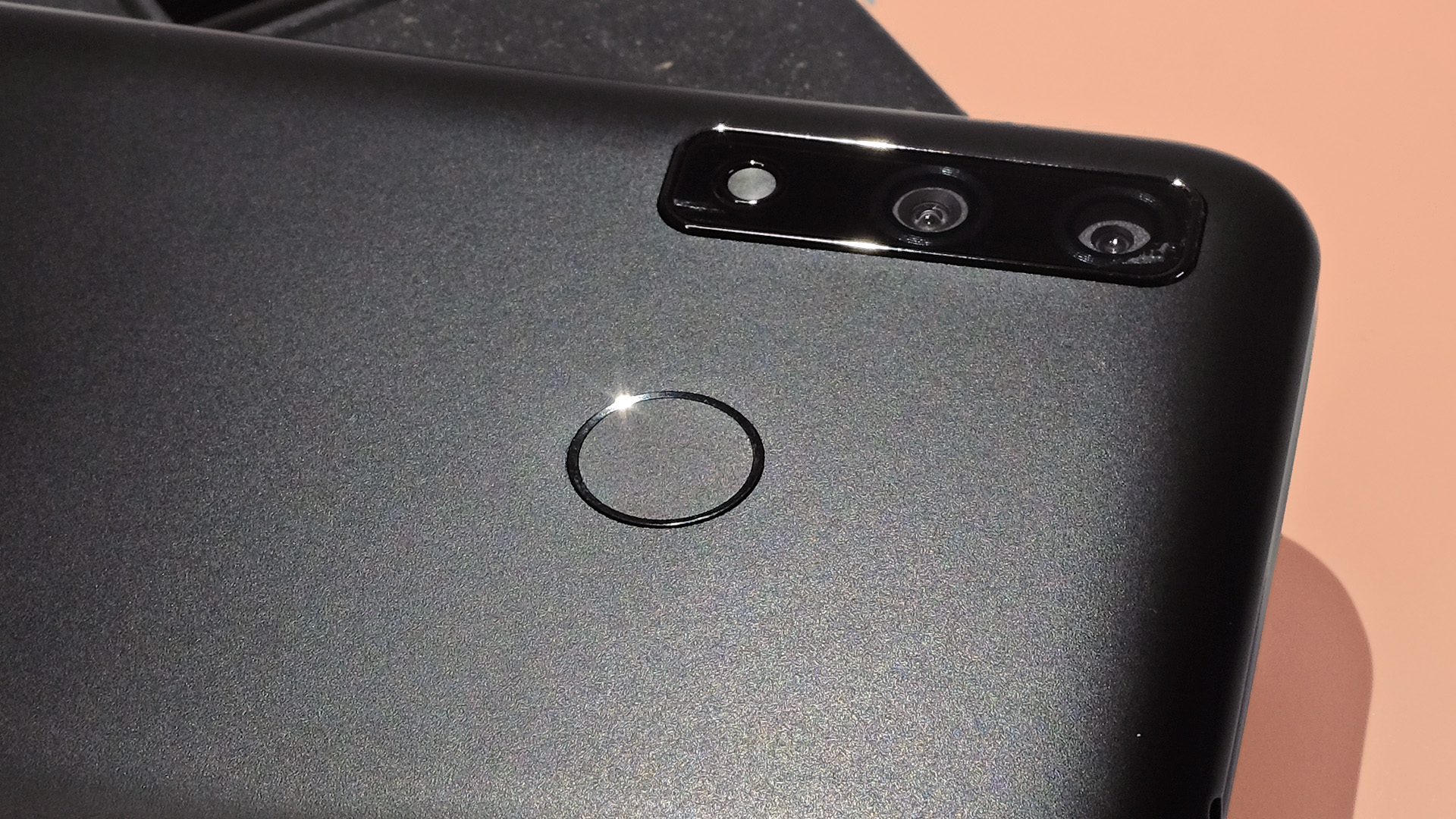
Image processing is relatively ugly, the edges of the frame turn to mush even in the main camera. Images shot in indoor lighting look milky and undersaturated. Night images look terrible and, by 2021 standards, the night mode is poor.
Video is also, you guessed it, bad. The Teracube 2e’s highest quality capture mode is 1080p, 30 frames per second, and as it has no kind of stabilization your footage will be unusable in many situations. Unless you like judder-vision.
The Teracube 2e’s 8MP selfie camera comes off well in comparison, but its images still look undersaturated next to those of other phones, and the fine latticework of noise over most image shows off the sub-standard processing.
You’re probably getting the idea by now. The Teracube 2e’s cameras are not good.
Camera samples










Battery life
- 4,000mAh removable battery
- Easily lasts a day and may even stretch to two
- Slow charging, and no bundled charger
The Teracube 2e’s battery brings better news. It’s a 4,000mAh unit, which does not seem all that high a capacity next to some alternatives. However, it's a great match for the low-power chipset and low-resolution screen.
Stamina is excellent. The Teracube 2e easily outlasts plenty of high-end phones in real-world conditions.
We routinely end up with around 50% battery by the end of the day, and on light days it has even been in excess of 60%. Add that kind of lasting power to the decent enough day-to-day performance and you have a phone that feels pretty easy to live with. As long as you don’t want to play games. Or take photos. Or listen to podcasts using the weak internal speaker.
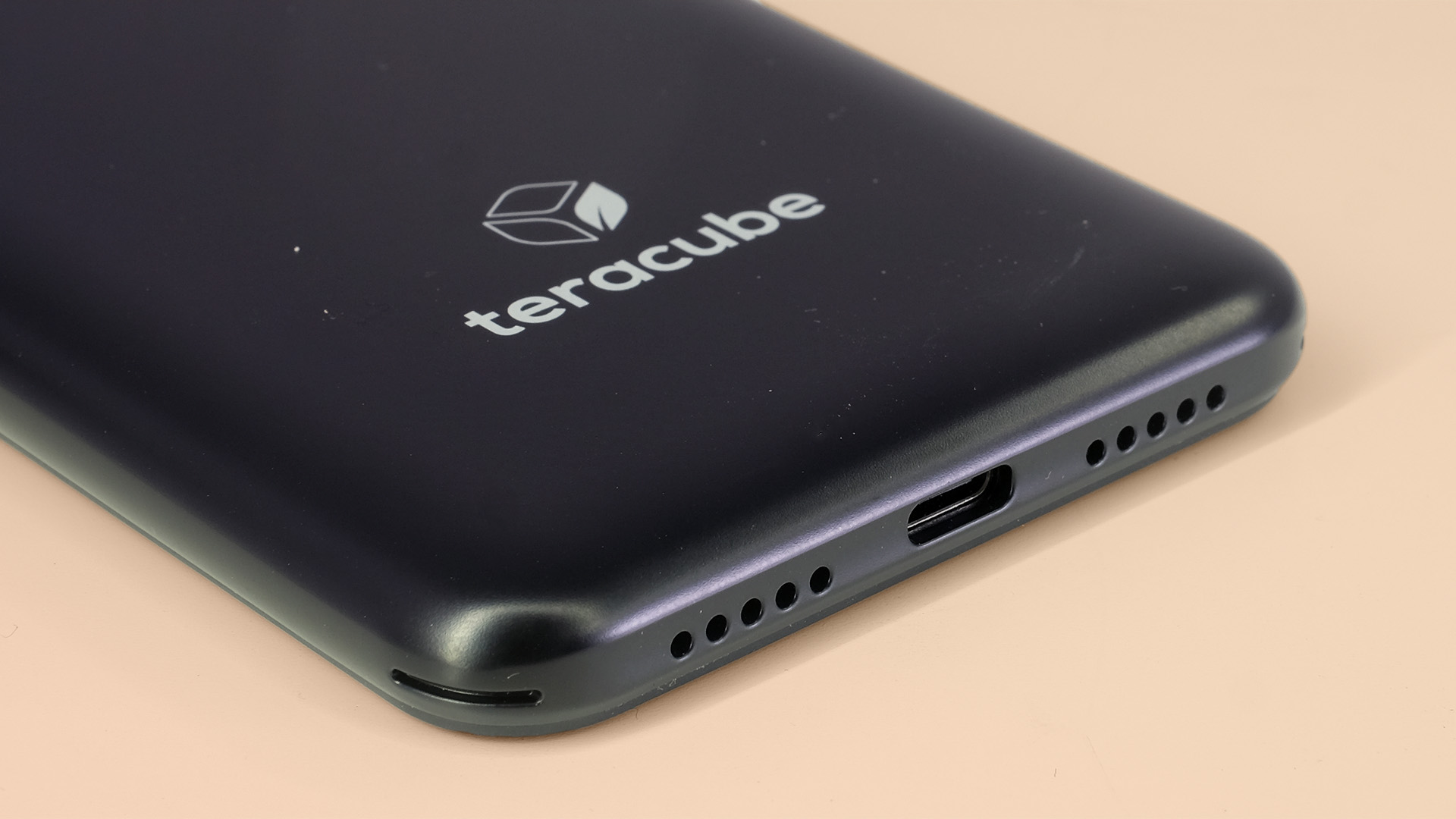
Teracube does not bundle a charger with the Teracube 2e. Yes, it is in part a cost-saving measure, but it’s one that fits with the brand’s low-waste message.
Unlike a top-end Samsung you don’t need a fancy adapter either. We tried both high voltage and high current bricks and the Teracube 2e doesn’t seem to draw more than 10-11W with either. The downside is relatively slow charging.
Should I buy the Teracube 2e?
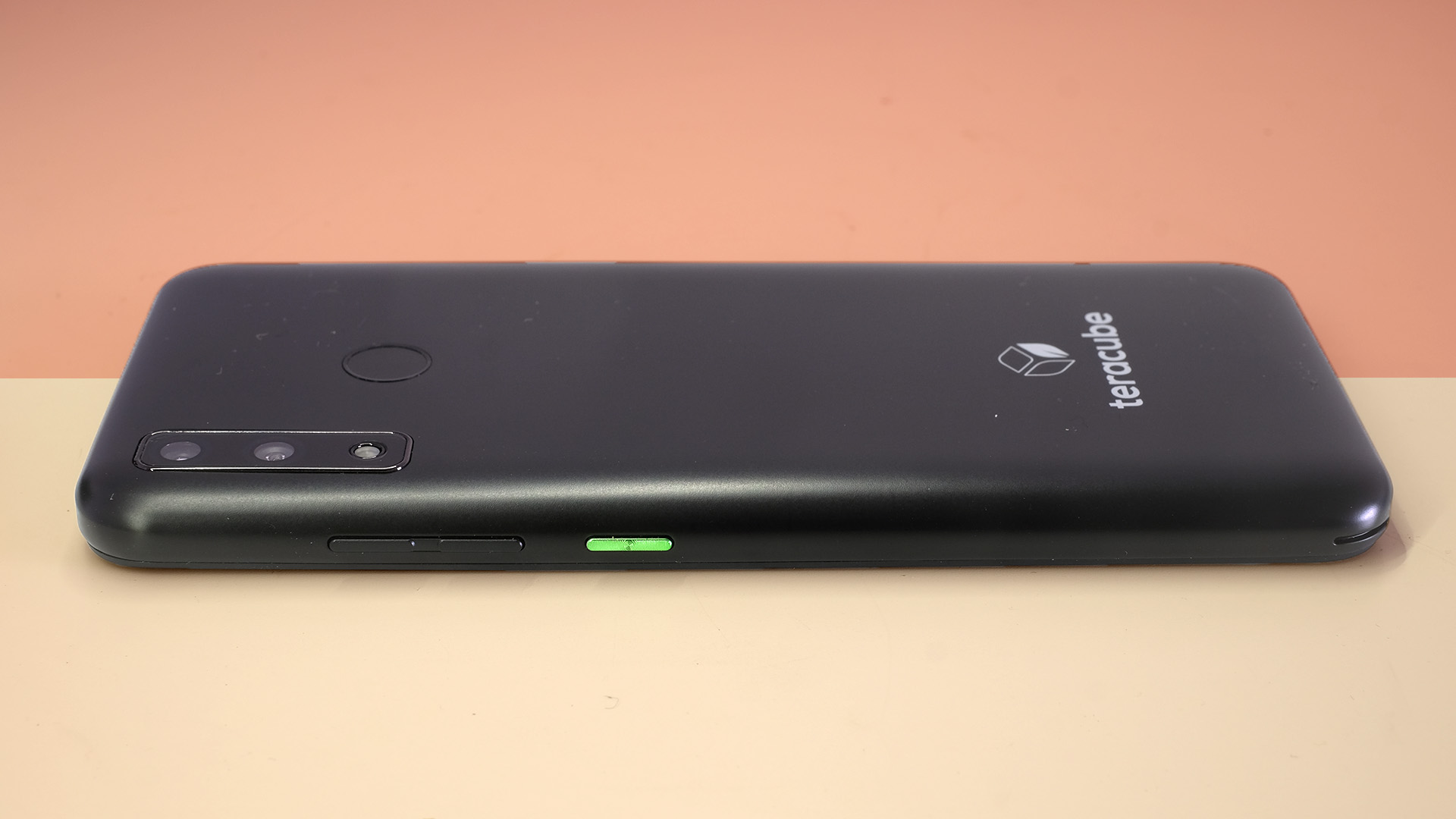
Buy it if...
You want to bring back the days of replaceable batteries
The nerd-bait excitement of the Teracube 2e centers around one thing: you can pop out the battery and replace it, just like in 1999. It’s a cute concept. We get the appeal for those who tend to only switch phones when they just don’t last through the day anymore. However, bear in mind replacements seem to cost $50 and may not be easily available by the time you need one.
You’re after a no-nonsense long-lasting phone for the basics
Teracube offers some great peace of mind extras. The Teracube 2e promises the same three years of updates as an Android One phone, and comes with a four-year warranty. This won’t cover you for wear and tear, accidental damage, or smashed screens. But if a hardware fault arises Teracube will send you a refurb so you don’t have to wait for a repair. Day-to-day performance is fair too, and the battery life is well above average. It’s a low stress buy if you only need the basics.
You want to feel good about yourself
Are you a know-it-all or an insufferable hipster type? The Teracube 2e might be right for you. Bore your friends with your ‘ethical’ credentials and bask in a delicious sense of smug self-satisfaction. Just don’t think too much about how the phone still uses the same rare-earth metals as any other, wrapped up in a simpler, cheaper shell.
Don't buy it if...
You want to take photos
The Teracube 2e’s cameras are terrible, as if Teracube wanted to take us back to the old days of tech not just with a replaceable battery, but with photo quality too. There’s no Auto HDR, the ultra-wide camera is dreadful, night photos are very poor, and handheld video is juddery thanks to the lack of stabilization.
You want to play games
Want to play games? Don’t get a Teracube 2e. It can’t play Fortnite, and can’t do justice to some of the other high-end games it can have a crack at. Older and lower-end titles can run well, but load times are far longer than we’re comfortable with.
You want a phone that will run smoothly in several years
The Teracube 2e just about gets by in 2021 with the power it has. If you don’t try to run a game, Android 10 runs with just a little lag. However, this leaves little headroom for the future, and new versions of Android tend to be made with slightly higher base specs in mind, not lower ones. This rather sours the idea of the Teracube 2e as a phone you’ll use for an eternity.
First reviewed: February 2021
Andrew is a freelance journalist and has been writing and editing for some of the UK's top tech and lifestyle publications including TrustedReviews, Stuff, T3, TechRadar, Lifehacker and others.
